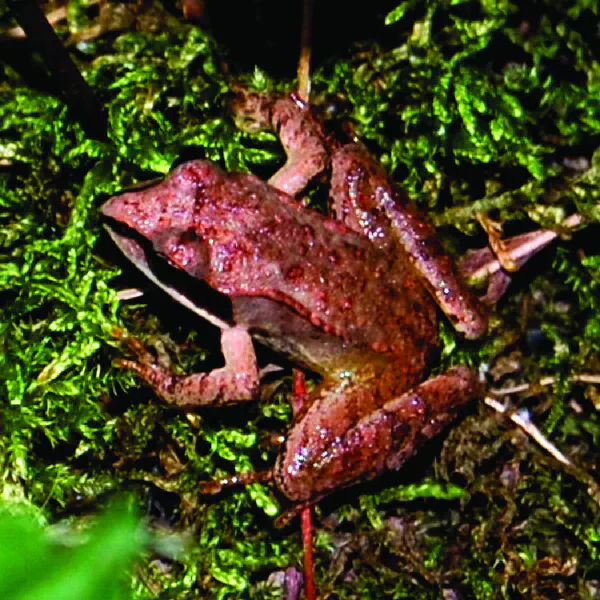Lithobates sylvaticus
Table of Contents

Scientific Classification
| Kingdom: Animalia |
| Phylum: Chordata |
| Class: Amphibia |
| Order: Anura |
| Family: Randiae |
| Genus: Lithobates |
| Species: Lithobates sylvaticus |
Conservation Status
Identifying Features
Wood frogs are usually a dark brown color, with black stripes that line from nose to behind the eye. They have white on the upper lip and white bands on their legs. They can grow up to 2-3 inches in length and have toes that are not fully webbed. Wood frogs emit short “quacks” that sound like ducks.
Habitat & Range
Wood frogs live in moist woods, open areas, and moist vegetation throughout northeast United States. They are more terrestrial than other frog species and spend lots of time in land habitats.
Behavior
Wood frogs are diurnal and can be found active during the day. Outside of breeding season, they are solitary and will spend time alone. During early spring each year, they undergo a seasonal migration and travel to breeding ponds in large numbers.
Life Cycle
Wood frogs are one of the earliest frog species to begin breeding in the spring. During breeding season, they migrate to vernal pools where females will lay clusters of eggs that range in the thousands. The eggs can take between a week or a month, depending on the water temperature, before hatching into tadpoles. After around two months, tadpoles will transition into frogs. Male juvenile frogs do not reach adulthood until 1-2 years, while females can take around 3 years.
Featured image by James Dake

